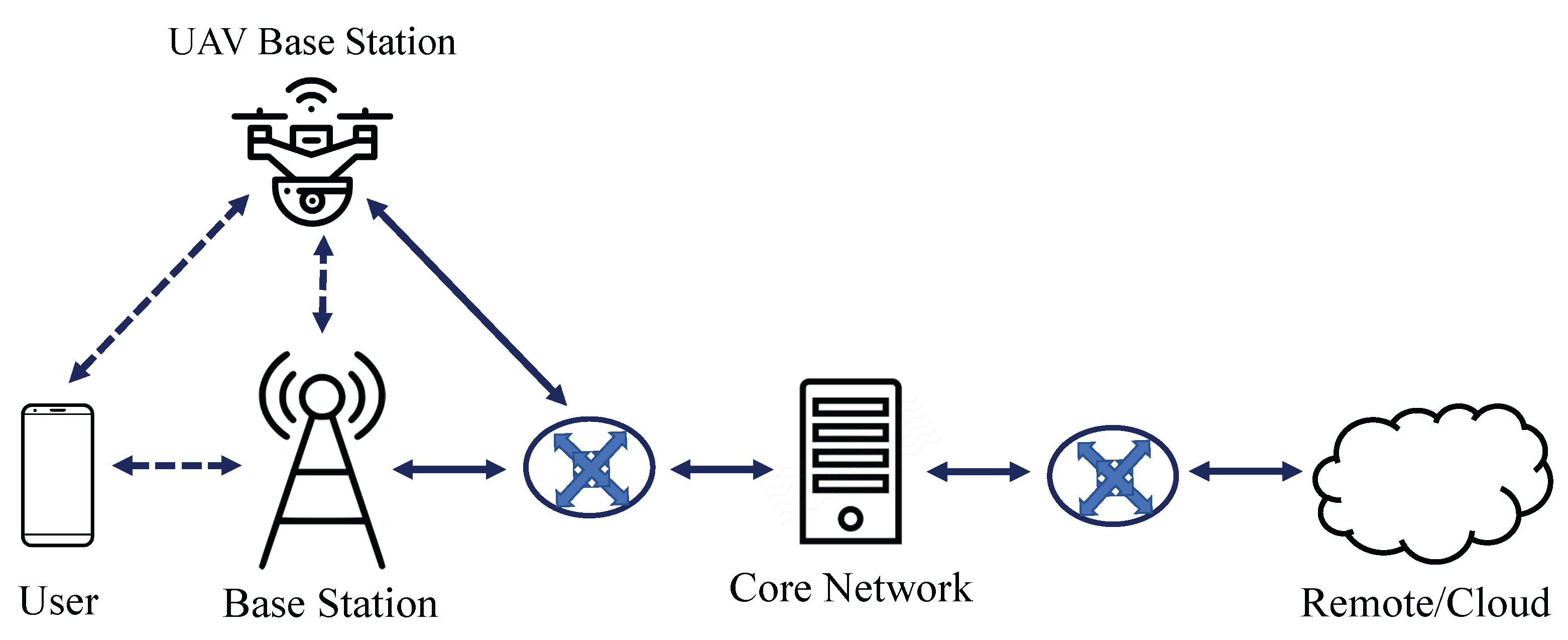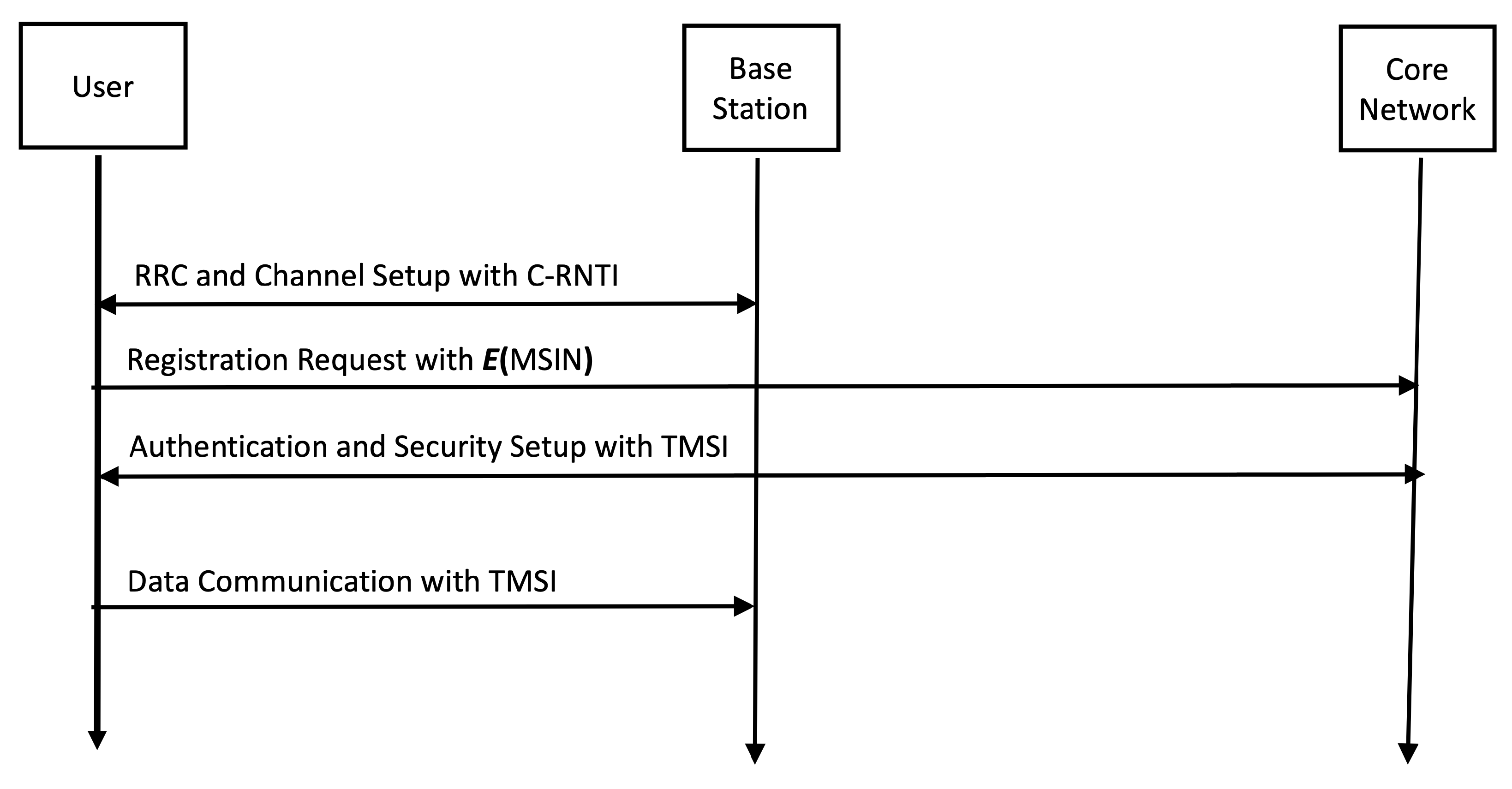You're using an outdated browser. Please upgrade to a modern browser for the best experience.
Please note this is an old version of this entry, which may differ significantly from the current revision.
3GPP standardizes and specifies the technologies for the radio access, backend core network, and service capabilities for mobile telecommunications, thus guiding mobile networking research and development and enabling interoperability between the different cellular service provider services.
- telecommunications networking
- 5G networking
- network
- wireless
1. Introduction
Mobility has traditionally been implemented and enabled for the mobile user. However, recent research and proposals introduce mobility to the telecommunications network service provider infrastructure. The unmanned aerial vehicle (UAV) drone-based flying base station (called UxNB in 3rd Generation Partnership Project or 3GPP [1][2]) improves the telecommunications connectivity provision. While the traditional stationary terrestrial base station has a fixed cell for its connectivity coverage, the flying base station’s mobility and its strategic location for connectivity enable more flexible, dynamic, and adaptive connectivity coverage. The flying base station can also improve the channel quality to the mobile user by approaching or securing the line-of-sight path to the mobile user (which is especially important for mmWave communications, which do not penetrate physical barriers as well as lower-band communications). The improved connectivity coverage and communication channels enable greater bandwidth/data rates and reduced latency for the next-generation wireless applications, including sensor applications (e.g., surveillance, personal, body, and environmental monitoring) and those based on holographic and haptic operations (e.g., virtual reality/VR or augmented reality/AR).
Securing a UAV flying base station is critical because it is a part of the cellular service provider infrastructure and the mobile users rely on it for connectivity. Its disruption and manipulation represent high security risks, as our everyday lives increasingly depend on reliable connectivity. In addition, the advancements and developments in wireless/mobile implementations, including software-defined radio (SDR) and open-source mobile networking softwares such as srsRAN, reduce the threat implementation barrier and increase the attack feasibility (even though these enabler tools and technologies provide longer-term benefits in securing the system, including improving the transparency, vendor interoperability, and security awareness). Researchers therefore treat the networking provider infrastructure as a critical infrastructure and focus on the integrity of flying base station operations (execution is as designed, and the unauthorized attackers cannot manipulate or change the protocol execution) and availability (the connectivity is provided when needed and requested).
The UAV drone flying base station system combines a telecommunications base station (for its application and purpose of connectivity provision) and UAV drone (for mobility implementation and control). While there has been research and development to secure the component technologies of the flying base station system (communications for base station, embedded control for UAV drone, and distributed computing for the base station’s coexistence with other base stations and the rest of the infrastructure), research and developments taking a systems approach to secure the flying base station as a system have been lacking.
2. Existing Telecommunications Networking Protocol: 3GPP Standardization Protocol and User vs. Base Station vs. Core Network
The connectivity provider infrastructure to provide connectivity to the mobile user includes the base station, the core network, and the intermediate routers/switches (which forward the networking packets across the physical distances after the base station). The lower row in Figure 1 depicts these entities from the user (left) to the cloud (right), where those between the base station and the core network are within the cellular service provider infrastructure. Beyond the core network is outside of the cellular service provider infrastructure and relies on the collaborations and agreements with other service provider entities.

Figure 1. Telecommunications networking architecture and entities, including the UAV flying base station in the upper row.
The base station connects to the mobile user wirelessly and serves as the bridge gateway to transition to the wireless communications for the mobile users in telecommunications networking. Because the mobile user uses a wireless communication link, while the networking from the base station to the internet and cloud are in the form of wired communications, the base station serves as the gateway between wireless vs. wired networking. The user and the base station communicate via radio-frequency (RF) wireless communications, while communication from the base station to the core network and then to the cloud is via wired communications involving other nodes such as routers and switches. Therefore, the base station is the first and the last hop to the mobile users communicating in RF. Beyond the base station, the core network is responsible for much of the digital processing to set up the connectivity services to the mobile user, including user registration, security setup, and service as well as access control. The communications and packets from the user are processed by the core network before it leaves, e.g., to the public internet.
Figure 2 describes the logical interactions for the control communications between the user, base station, and core network. The brief description abstracts from the telecommunications implementations and details from [3][4][5] and focuses on the information needed to understand this research. The user and the base station require radio resource control (RRC) and a wireless channel for setting up the RF wireless communications, where the communication resources are shared with multiple other users coexisting in the nearby air medium. The RRC begins with the broadcasting messages by the base stations, including the master information block (MIB) and system information block (SIB). The MIB and SIB messages are publicly broadcasted and advertised as the base station is a public entity for serving the cellular connectivity, often serving a large number of mobile users freely entering and exiting the cell. Receiving and decoding the MIB and SIB enable the mobile user to attach to the base station and set up a communication channel, resulting in the user-dedicated cell radio network temporary identifier (C-RNTI). This wireless channel setup is followed by digital control including the registration and authentication verification as well as the security setup between the user and the core network. From the user and (universal) subscriber identity module (SIM or USIM) registration (which occur in advance before the user activation to receive the connectivity service and not drawn in Figure 2), the core network derives the mobile subscriber identification number (MSIN) and the more temporary ID of the temporary mobile subscription identifier (TMSI) and shares that with the user and the base station. The MSIN is not communicated in plain-text and rather is processed by an encryption function E, thus exchanging . Afterward, the user can use the established RF and digital channel for data communications and networking applications.

Figure 2. Control communication protocol interactions between the user, base station, and core network to set up the data channel.
This entry is adapted from the peer-reviewed paper 10.3390/fi15050176
References
- 3rd Generation Partnership Project. Enhancement for Unmanned Aerial Vehicles. 2019. Available online: https://portal.3gpp.org/desktopmodules/Specifications/SpecificationDetails.aspx?specificationId=3557 (accessed on 15 April 2023).
- 3rd Generation Partnership Project. Uncrewed Aerial System (UAS) Support in 3GPP. 2022. Available online: https://portal.3gpp.org/desktopmodules/Specifications/SpecificationDetails.aspx?specificationId=3545 (accessed on 15 April 2023).
- 3GPP. TS 23.003. Numbering, Addressing and Identification, 2021. Available online: https://portal.3gpp.org/desktopmodules/Specifications/SpecificationDetails.aspx?specificationId=729 (accessed on 15 April 2023).
- 3GPP. TS 36.321. Medium Access Control (MAC) Protocol Specification, 2021. Available online: https://portal.3gpp.org/desktopmodules/Specifications/SpecificationDetails.aspx?specificationId=3194 (accessed on 15 April 2023).
- 3GPP. TS 36.331. Evolved Universal Terrestrial Radio Access (E-UTRA); Radio Resource Control (RRC), 2021. Available online: https://portal.3gpp.org/desktopmodules/Specifications/SpecificationDetails.aspx?specificationId=2440 (accessed on 15 April 2023).
This entry is offline, you can click here to edit this entry!
